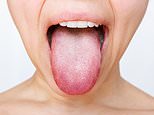Sure! Here is a rephrased version of the original content in natural, clear English with improved flow and structure, while retaining the original meaning and detail:
—
The tongue’s shape, color, and texture are valuable indicators of a person’s overall health. These features can reveal signs of nutritional deficiencies, infections, and—potentially—early stages of serious conditions like cancer. Because of this, healthcare providers regularly examine the tongue as part of a general health assessment. It offers observable clues that may point to underlying medical issues.
### What a Healthy Tongue Looks Like
A healthy tongue typically appears pink and has a slightly rough texture due to the presence of papillae (“taste buds”), which are small bumps that help with tasting and chewing. However, normal variations exist. For instance, individuals with darker skin tones may naturally have purple or brownish pigmentation on their tongues, which is not usually a cause for concern.
### Tongue Color: What It Can Tell You
– **Pale or Smooth Tongue:** A tongue that appears pale or unusually smooth often indicates vitamin or mineral deficiencies—particularly iron, folate, niacin (B3), or vitamin B12. The smoothness results from a loss of papillae, a condition known as atrophic glossitis, which may cause burning sensations or soreness.
– **Bright Red Tongue:** May be associated with inflammatory conditions (like glossitis), infections, scarlet fever, Kawasaki disease (especially in children), or emotional stressors like anxiety and insomnia. Deficiencies in B-complex vitamins (such as B2, B6, B9, B12) or protein can also cause the tongue to become red and inflamed.
– **Bluish Tongue:** Could be a sign of poor circulation or low oxygen saturation in the blood, potentially relating to cardiovascular or respiratory issues.
– **White Coating:** A thick white film on the tongue is often due to oral thrush (a yeast infection caused by Candida), dehydration, or poor oral hygiene. In some cases, it may be due to leukoplakia—a precancerous condition often associated with smoking or chronic irritation. Persistent coatings should be evaluated by a healthcare provider.
– **Yellow Coating:** A yellowish layer may signal digestive imbalances, bacterial overgrowth, or smoking-related changes. This often reflects disturbances in the digestive system or insufficient detoxification.
– **Black or Brown Coating:** Usually caused by a harmless condition called “black hairy tongue,” where dead skin cells build up on the papillae, creating a dark appearance. Contributing factors include smoking, antibiotic use, poor oral hygiene, or certain medications. Though rarely serious, persistent discoloration may warrant medical attention.
– **Black Spots:** These may result from vitamin deficiencies involving B12, folic acid, or niacin. They can also be associated with smoking, medication side effects, or poor hygiene.
### Tongue Texture and Shape: What They Indicate
– **Smooth Tongue:** A glossy tongue surface usually points to vitamin deficiencies or inflammation like glossitis. Nutrients such as iron, folate, and B vitamins are often involved.
– **Bumpy or Swollen Tongue:** May develop due to allergic reactions, infections, or a benign condition known as geographic tongue, characterized by temporary loss of papillae in patchy areas. Ongoing swelling or tenderness should be medically assessed.
– **Cracked or Fissured Tongue:** While usually harmless and often genetic, fissures can also be aggravated by dehydration or autoimmune disorders like Sjögren’s syndrome. Good hydration and tongue hygiene help manage this condition.
– **Hairy Tongue:** Refers to elongated papillae that trap food particles and bacteria, giving the tongue a “hairy” appearance. Causes include smoking, antibiotic use, and poor oral hygiene, and the condition generally improves with regular brushing.
– **Enlarged Tongue (Macroglossia):** Can indicate allergies, digestive disorders, or metabolic conditions such as diabetes. Persistent swelling should be evaluated by a physician.
### When to Be Concerned: Signs of Serious Conditions
Certain changes in the tongue may suggest serious health concerns. Non-healing sores, red or white patches that persist, or irregular thickened areas might be early signs of oral cancer or precancerous changes. Any unusual or persistent abnormality should be examined promptly by a medical professional.
### Clinical Relevance of Tongue Assessments
Medical practitioners—including doctors, dentists, naturopaths, and traditional medicine healers—often use tongue appearance as a subjective but helpful diagnostic tool. Changes in tongue color, texture, moisture, size, and coating can guide clinical assessments and even therapeutic decisions. In traditional Chinese medicine and acupuncture, the tongue serves as a vital diagnostic window into internal organ function and systemic balance.
### Summary
The tongue offers a unique and visible insight into one’s internal health. Nutrient deficiencies—particularly of iron and B vitamins like B12, folate, or niacin—frequently manifest in changes to tongue color and texture. Similarly, infections, autoimmune disorders, and circulatory issues can leave clues on the tongue’s surface. Lifestyle habits, including smoking, alcohol intake, and oral hygiene, can also affect its appearance. While many tongue changes are benign, ongoing or unexplained abnormalities—especially sores, discolorations, or growths—should be medically evaluated to rule out serious health conditions, including cancer.
—
Let me know if you’d like a Vietnamese rephrasing as well!


